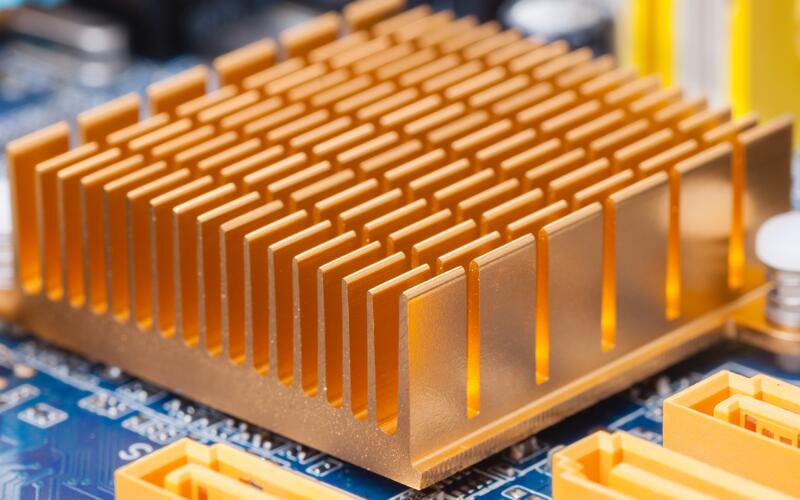As long as there is a current flowing through an electronic device, the energy loss will be manifested as heat, and the greater the loss, the more heat will be generated. In semiconductor devices, the gate has been reduced to the size of nanometers, and a single bare chip can now contain millions of gates formed by billions of transistors, which is a test for heat dissipation.
The effect of overheating on semiconductors
Semiconductor materials change with temperature due to the electromigration effect, and the performance of the device will be reduced beyond the temperature limit of the device. In addition, semiconductors rely on bonding connections, and if exposed to high temperatures, the integrity of the bond can be compromised. Semiconductor devices are usually composed of chips on an insulated substrate, and overheating will cause different levels of deformation in the semiconductor devices, reducing the service life; Or due to the expansion of the packaging material and stress on the chip, resulting in premature failure of the device, which adversely affects reliability, so the higher the operating temperature, the lower the reliability.
Cooling solution
The typical PCB heat dissipation method is passive cooling, where a low thermal resistance copper sheet placed under and around the semiconductor takes away the heat of the device and distributes it to other parts of the PCB board if the space and components allow.
Another way to dissipate heat from semiconductors is to install radiators, which are generally made of aluminum and covered with fins on the substrate to maximize the surface area, and then rely on air convection to dissipate heat. Compared to the first method, the heat can be dissipated from the device more efficiently.
If the radiator is unable to dissipate excess heat, a fan can be installed to force heat dissipation. The advantage is increased air convection to speed up heat transfer, the disadvantage is that this arrangement will suck dust and pollutants into the equipment, which may affect the overall reliability or potentially reduce the thermal efficiency of the radiator.

If space is limited, another solution is heat pipe cooling. As an off-the-shelf material, heat pipes provide a reliable and cost-effective way to passively transfer heat from hot spots on the plate to cooler locations. Typically, heat pipes contain a small amount of endothermic liquid, such as pressurized nitrogen, ammonia, or acetone. The fluid absorbs heat and turns into vapor, which flows down the pipe to the condenser, where it condenses back into a liquid state and then returns to the heat source for re-circulation. Heat pipes have the advantage of passive construction, no moving parts, and no maintenance requirements.
Other solutions include using liquid-cooled cooling plates or Peltier effect cooling plates, but add cost and design complexity.
PCB heat dissipation recommendations
1. Provide natural ventilation for the circuit board, so that the air freely flows through the surface of the circuit board, which can minimize the uneven cooling.
2. If the PCB is installed in the housing, try to choose the housing made of low thermal resistance materials; Fins, ridges, or simple raised designs can be used to maximize the surface area of the shell. If the enclosure of the device allows, the direction of the PCB can be adjusted vertically, using the principle of hot air rising and cold air sinking to increase the airflow rate of natural convection.
3. If a fan is installed, place the fan at one end of any natural convection channel to ensure free air flow; In addition, if the device is running in an area with dust or contaminants, install a filter.






